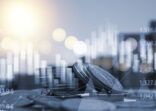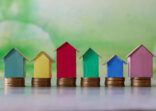When we launched the Sustainable Income and Growth (SIG) strategy in July 2019, we knew the journey ahead would be difficult. US-China trade tensions coupled with lofty valuations in financial markets put an acute emphasis on security selection.
We also knew that to meet our objectives, which is to deliver a high level of natural income and capital appreciation – in a sustainable manner, we had to behave differently from the usual way of managing a multi-asset income fund. This led to our bottom-up investment approach, unconstrained by style or asset class.
By mid-February, we had delivered a total return close to 8%, and our cautious stance resulted in credit representing 47% of our portfolio’s assets, while real assets accounting for 24%. However, none of our scenario analysis prepared us for a global pandemic and the near total collapse of activity in many industries.
As a fierce global recession ensued, we went from a positive return to being down 26% in just over a month. Exposure to property, which proved so resilient in the 2018 sell-off, now worked against us as airports and cities were shuttered.
Nevertheless, the crisis gave us an opportunity to prove our concept. By focusing on companies with sustainable business models and cashflows, you can take the natural income to meet your near-term goals, while leaving your capital to grow over the long term.
With dividend cuts, historically low yields, rising defaults and an uncertain property market, some investors have questioned the viability of income investing. While the uncertainty means it is harder, low yields also makes it vitally important.
To date, we have delivered our 5% income objective and remain on track to do so. There are 3044 companies in the MSCI ACWI Index, of which 2114 paid dividends in 2019. In 2020, 16% are expected to cut dividends, of which 5% will omit dividends completely, according to Bloomberg. SIG holds just over 60 securities, which affords us the flexibility to navigate this uncertainty.
Bank of America research showed that between 2005 and 2015, 17 companies went bankrupt on the S&P 500. Fifteen had ESG scores that were below average. With the lowest rated 20% excluded from our universe, we were confident performance would recover once near-term technical factors give way to long-term fundamentals.
We believe capital growth is a function of income growth over time. Encouragingly, we have demonstrated for most of the past year that the fund has the propensity for capital growth. We believe a process that encourages uncomfortable but disciplined risk taking is likely to produce better than average results long term.
The Covid-19 crisis has accelerated structural changes. As a result, we have significantly changed the portfolio by selling holdings related to retail, student accommodation, oil, banks and southern emerging market nations. Instead, we have looked to capture opportunities on the right side of change, ranging from life sciences and healthcare, to work from home beneficiaries and the migration to digital.

Where possible, we have also looked for revenue streams backed by the US federal government or improved credit quality and looked for investments in north Asia. While the monetary and fiscal policy backdrop remains supportive for growth assets long-term, we acknowledge deep-seated tail risks and continue to favour less cyclical companies.
It has been a remarkable year. But as we move from resilience to renaissance, there are exciting times ahead.
Francois de Bruin is manager of the Aviva Investors Sustainable Income and Growth Fund.
Aviva Investors Sustainable Income & Growth Fund is a multi-asset portfolio designed to deliver 5% natural income, with a high allocation to growth assets, and investing in shares in companies with sustainable revenue streams.
Find out more about Aviva Investor Sustainable Income & Growth Fund

















